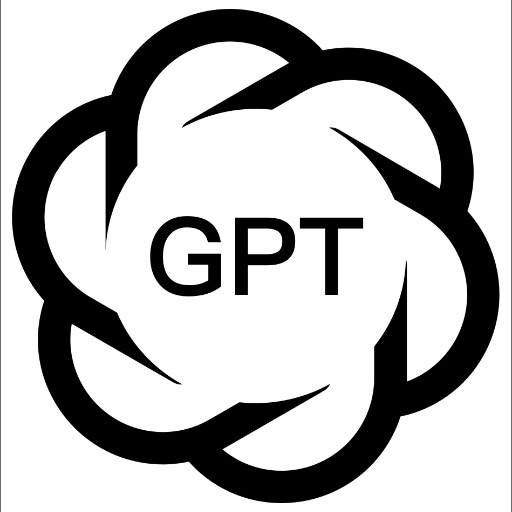Forecast Master-AI-powered time series forecasting tool.
AI-powered forecasting for smarter predictions.
How can I improve my ARIMA model?
What's the best way to forecast seasonal data?
Can neural networks be used for time series forecasting?
How do I handle missing data in time series analysis?
Related Tools
Load More
Future Forecast
Advanced predictive analysis tool

Trend analyzer
Products of tomorrow, today!

Economic Data Visualizer
Accurate IMF data analysis with precision focus

Future Predictor
A future predictor with specific, certain answers

Futures & Foresight
Futures Literacy & Strategic Foresight

Sales Forecast Genius
Expert AI for End-of-Year Sales Projections
20.0 / 5 (200 votes)
Introduction to Forecast Master
Forecast Master is designed to assist users with advanced time series forecasting and analysis, combining both classical statistical techniques and cutting-edge machine learning methods. It is focused on practical scenarios like forecasting sales, inventory, stock prices, energy demand, and more. Forecast Master can analyze patterns in historical data to predict future values, automate model selection, and enable feature engineering to improve predictions. Key methods include ARIMA, SARIMA, deep learning models (e.g., LSTMs, N-BEATS), and hybrid models. For example, a retailer can use Forecast Master to predict future sales by leveraging historical data and incorporating external factors like holidays and promotions.

Main Functions of Forecast Master
Classical Statistical Forecasting
Example
A company can use ARIMA or SARIMA models to forecast monthly sales of a product based on historical sales data. These models handle seasonality and trends effectively.
Scenario
For a retail chain, forecasting sales during different seasons and holiday periods is crucial for inventory planning. SARIMA could account for both seasonal spikes and long-term trends in the sales data.
Machine Learning Forecasting
Example
A utility company may apply neural network models like LSTMs or N-BEATS to predict electricity demand by training on past consumption patterns along with external features like weather data.
Scenario
In an energy demand forecasting case, LSTMs can predict short-term energy needs by learning patterns from past energy consumption and considering variables such as temperature, day of the week, and time of day.
Hierarchical Forecasting and Reconciliation
Example
A large retailer forecasting product sales at multiple levels—store, region, and national—can use hierarchical models to ensure that individual forecasts at the store level sum up correctly to regional and national forecasts.
Scenario
In a multi-store retail environment, Forecast Master’s hierarchical reconciliation ensures that sales forecasts for each store, when aggregated, match the forecast at the regional and national levels, improving coordination across different management tiers.
Ideal Users of Forecast Master
Data Scientists and Analysts
Data professionals working with time series data in industries like finance, supply chain, energy, or retail. They need tools to automate complex forecasting tasks, handle large datasets, and apply both statistical and machine learning models. Forecast Master enables them to perform model selection, feature engineering, and backtesting with minimal manual intervention.
Business Leaders and Decision-Makers
Business executives or operations managers who rely on accurate forecasting to make strategic decisions. For instance, retail managers can use forecasts for inventory management, or energy sector leaders can optimize resource allocation based on demand forecasts.

How to Use Forecast Master
Visit aichatonline.org for a free trial without login, no need for ChatGPT Plus.
Start by visiting the website to access the tool. You can begin using the services without the hassle of signing up or needing a premium account.
Prepare your time series data.
Make sure you have your data in a suitable format (e.g., CSV, DataFrame). Time series data usually consists of a timestamp column and a value column.
Choose a forecasting model or let Forecast Master suggest one.
Depending on the nature of your data (e.g., seasonal, intermittent), choose from classical models like ARIMA or advanced ones like neural networks. Alternatively, Forecast Master can recommend the most appropriate model.
Perform model training and validation.
Upload or input your data into Forecast Master, select a training window, and let the model learn from historical data. Cross-validation and error metrics will help you assess performance.
Fine-tune, predict, and export.
After evaluating results, you can fine-tune parameters or choose a different model. Once satisfied, generate forecasts and export them for use in your applications.
Try other advanced and practical GPTs
Mockup Photos
AI-powered mockups for any scenario.

English to Roman Urdu Translator
AI-powered Roman Urdu translation.
Text Corrector For All Language
AI-powered text correction for all languages.

ColdCaller GPT
Automate your cold calling with AI precision.

繁體中文 GPT
AI-powered language tool for Traditional Chinese.

Aiqianzhiyong
Humanize knowledge with AI-powered wisdom.

Talking FAR/AIM for Pilots
AI-powered answers for pilots’ FAR/AIM needs

基本のエージェント
AI-powered tool for efficient task completion.

Financial Analyst
AI-driven financial insights for smarter decisions

Graphviz Architect
AI-powered Graphviz diagrams made easy.

컨텐츠 아이디어 v4.9
AI-powered tool for creative content ideas.

먀옹철 - 고양이 건강 상담소
Smart Cat Health Insights with AI

- Sales Forecasting
- Anomaly Detection
- Demand Planning
- Energy Forecasting
- Inventory Optimization
Top 5 Q&A About Forecast Master
Can Forecast Master handle multivariate time series?
Yes, Forecast Master supports both univariate and multivariate time series. You can input multiple features or external covariates such as weather data or economic indicators to enhance forecast accuracy.
What kind of time series models does Forecast Master support?
Forecast Master supports a wide range of models from ARIMA, SARIMA, and exponential smoothing to more advanced machine learning models like XGBoost, LightGBM, and deep learning models such as LSTMs and Temporal Convolutional Networks.
How does Forecast Master handle seasonality in time series?
For seasonal data, Forecast Master can automatically detect seasonality and apply models like SARIMA or even incorporate external seasonality through covariates. For machine learning models, it can learn patterns using feature engineering techniques.
Can I use Forecast Master for probabilistic forecasting?
Yes, Forecast Master provides probabilistic forecasts, generating confidence intervals that help quantify uncertainty in predictions. It supports methods like Monte Carlo simulations and probabilistic deep learning models.
How do I assess the performance of my forecasting models?
Forecast Master evaluates models using metrics like MAE, RMSE, MAPE, and sMAPE. It also offers advanced validation techniques such as cross-validation and backtesting to ensure robust performance over different time horizons.